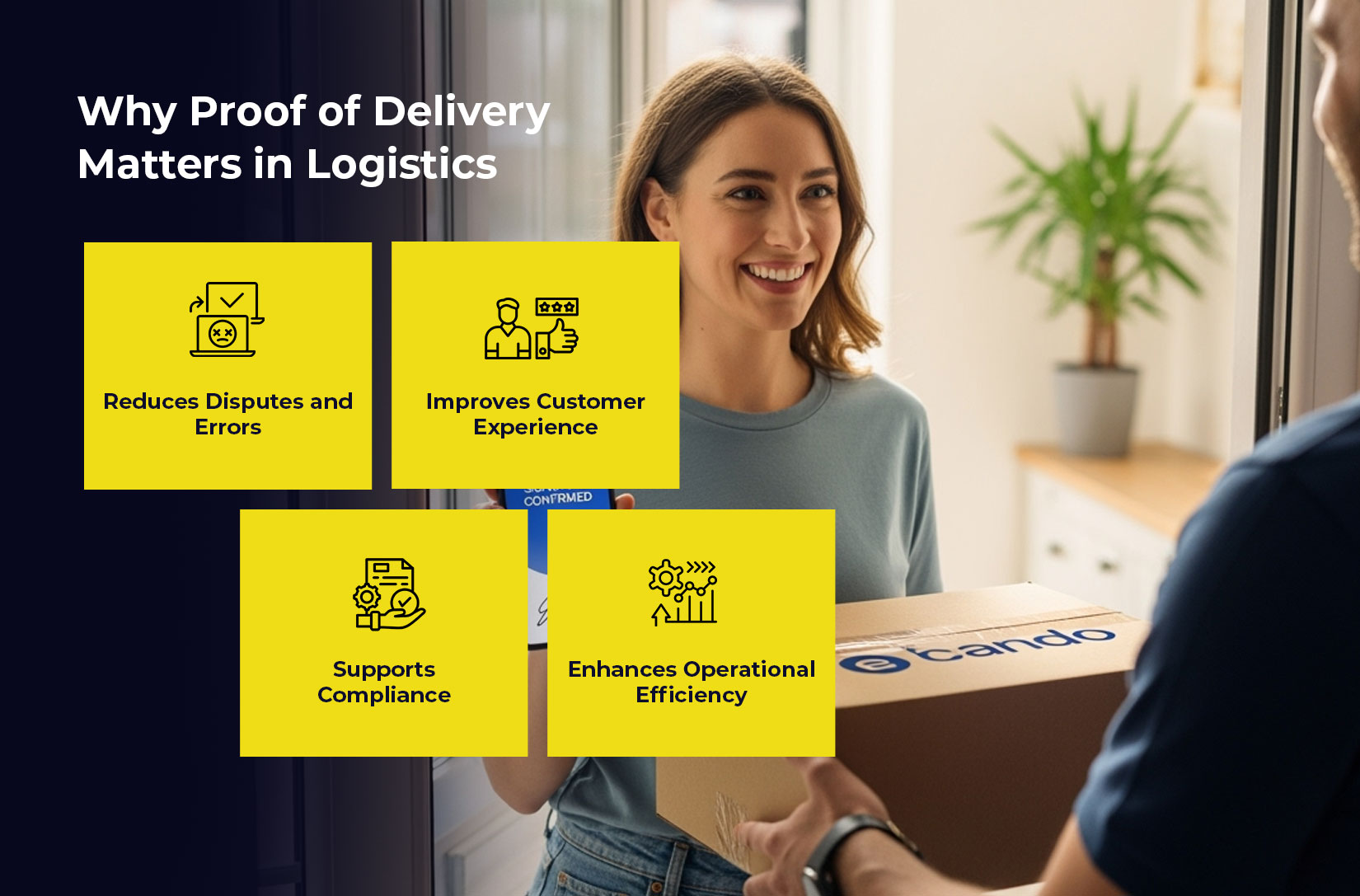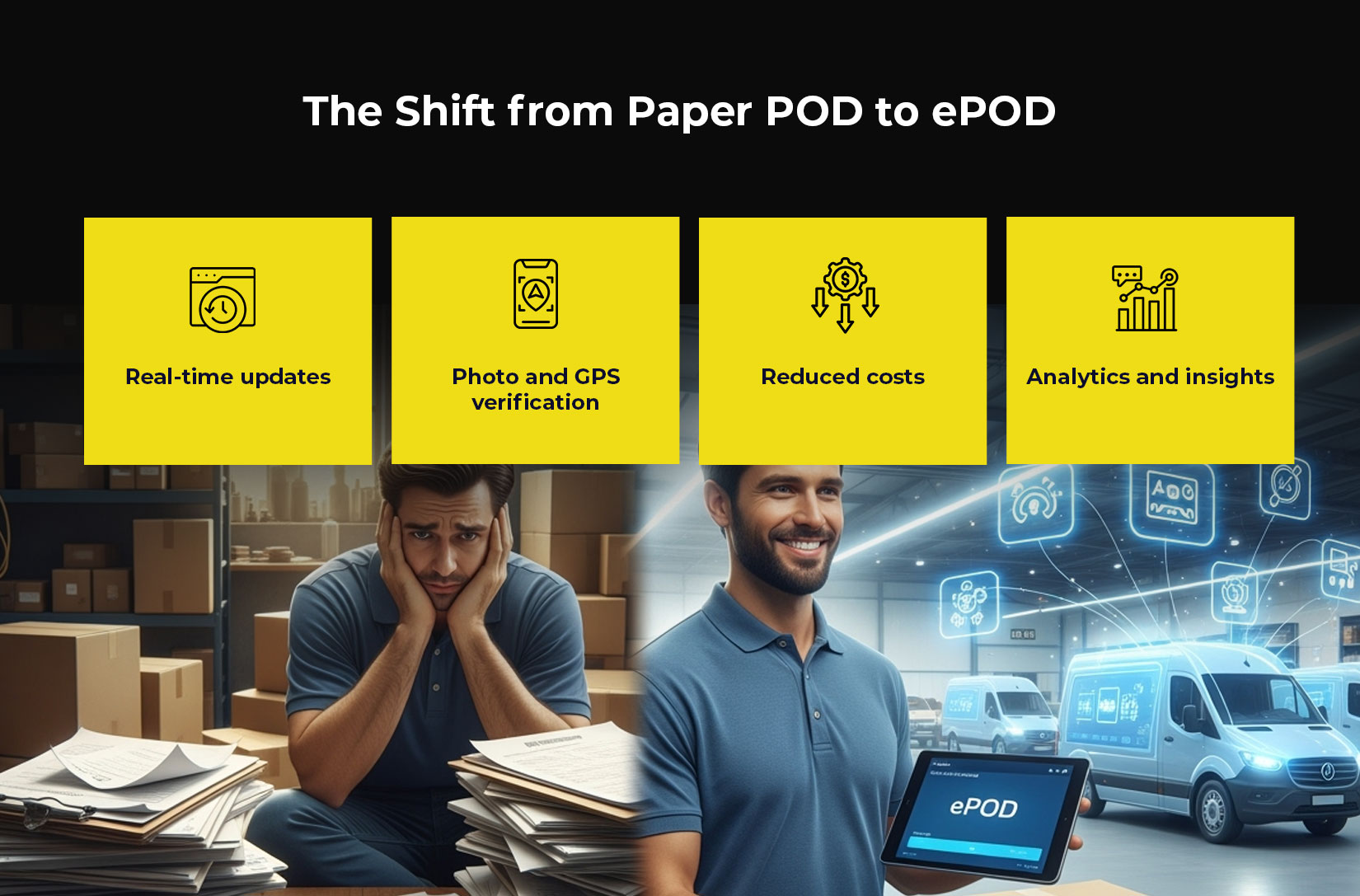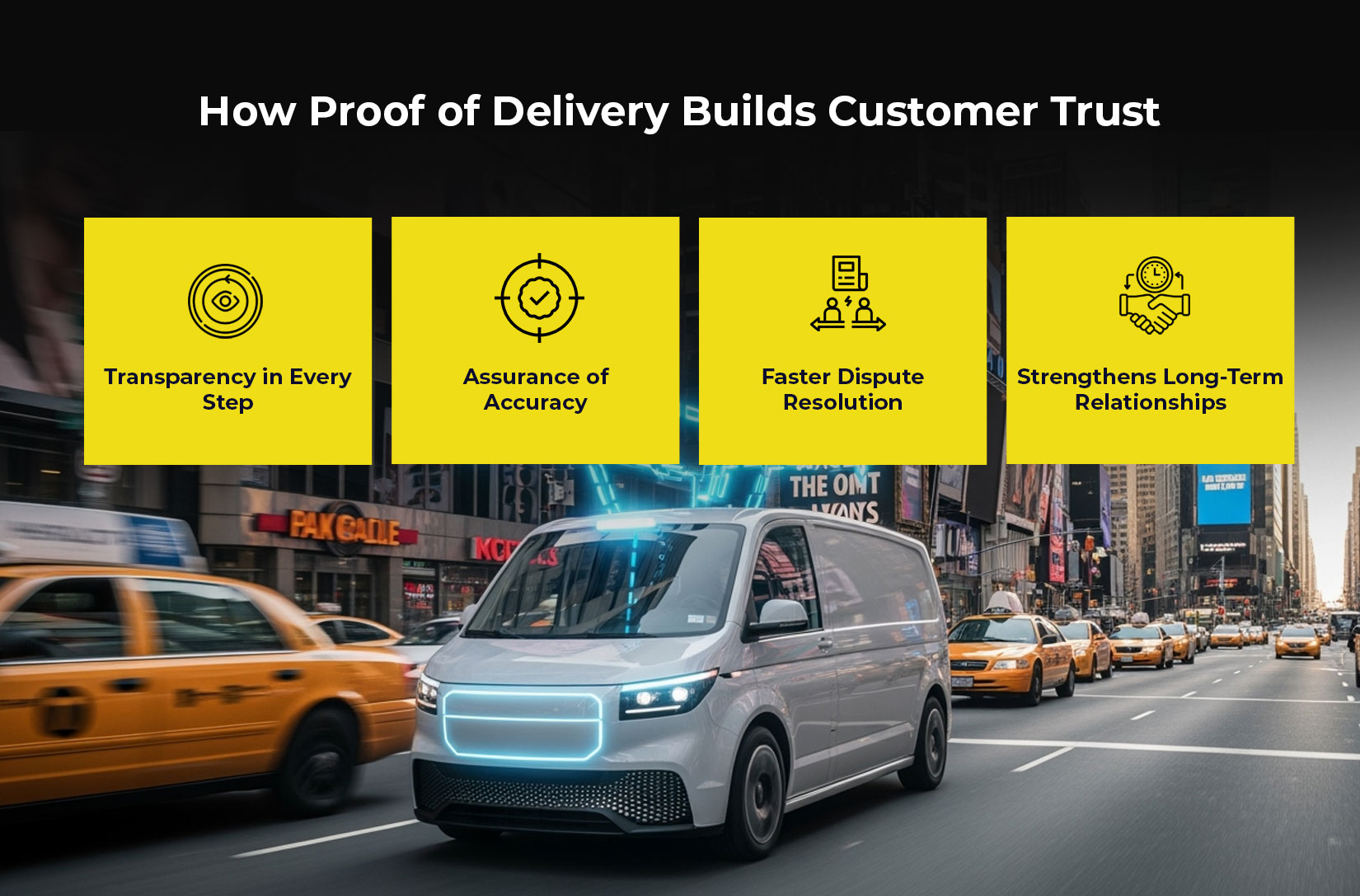
How Proof of Delivery Enhances Transparency and Builds Customer Trust
In the rapid world of logistics, the ability to provide accurate, real-time updates to customers is no longer an option. It has now become an expectation by the consumers. One of the most powerful and useful tools that help the businesses to achieve this is Proof of Delivery (POD). It can come from traditional means like papers or through modern means like Electronic Proof of Delivery (ePOD). In either way POD plays a huge role in ensuring transparency, accountability and trust between businesses and their customers.
This blog explores how proof of delivery enhances transparency, strengthens customer trust, and supports advanced transportation operations.
What is Proof of Delivery?
It is a record that confirms goods or services have been delivered to recipient it was supposed to receive. Traditionally, the driver was handed a signed paper to confirm deliveries. But today many companies with advancement in technologies are able to adopt ePOD systems. This provides them confirmations through mobile apps, GPS tracking, photos and electronic signatures.
As per a reporting by Allied Market Research, the global electronic proof of delivery market was valued at $2.8 billion in 2020. It is projected to grow and reach $8.2 billion by 2030, growing at a CAGR of over 11%. This growth shows the increasing demand for visibility and efficiency in logistics.
Why Proof of Delivery Matters in Logistics

1. Reduces Disputes and Errors:
POD helps in ensuring that there is a documentation of successful delivery. In case of any disputes over missed or damaged shipments, businesses can use this documentation to solve the issues instantly.
2. Improves Customer Experience:
Customers value transparency. By sharing POD details instantly, businesses are able to assure the customers. Assurance could be for delivery on time or correct deliveries.
3. Supports Compliance:
It is important for industries like pharmaceuticals, healthcare and food delivery to keep an accurate record of deliveries. This helps in maintaining regulatory compliance. Proof of delivery provides proof that deliveries were made under the required conditions.
4. Enhances Operational Efficiency:
Modern proof of delivery for advanced transportation goes beyond signatures. With ePOD, companies have the ability to track driver performance, optimize delivery routes and even reduce the use of paper-based documentation.
The Shift from Paper POD to ePOD

Paper-based proof of delivery has served businesses for decades, but it comes with limitations. Limitations like- loss of paperwork, illegible signatures and slow processing. Electronic Proof of Delivery eliminates all of these issues. Key benefits:
1. Real-Time Updates:
Customers and businesses receive instant and on-time confirmation when a delivery is completed. This helps in improving transparency and strengthening the trust of the customers throughout the process.
2. Photo and GPS Verification:
Drivers with the help of ePOD can now capture photos or tag GPS locations to validate driver accuracy. This leads to a reduction in disputes and also ensuring accountability.
3. Reduced Costs:
By reducing errors, use of paper and improving the processing time will lead to higher savings. This will also help in streamlining operations.
4. Analytics and Insights:
ePOD systems are able to provide companies to gather data, identify bottlenecks and analyse the data collected. This helps in enhancing overall efficiency for continuous improvement.
According to Capgemini’s research, businesses using digital proof of delivery solutions can reduce customer disputes by up to 80%. Along with it also increasing delivery accuracy by 25%.
How Proof of Delivery Builds Customer Trust

1. Transparency in Every Step:
Visibility in the deliveries is a mandate. With the help of POD, they can see exactly when their shipment arrives, who received it and in what condition. This reduces anxiety among the consumers and creates confidence in the brand.
2. Assurance of Accuracy:
Mistakes in the delivery can be costly both financially and reputationally. POD provides a safety net by confirming that the right order is reaching the right person. For e-commerce customers, better accuracy means higher satisfaction.
3. Faster Dispute Resolution:
During the time of disputes, POD acts as a reliable record. For instance, an ePOD with timestamped GPS data and delivery photos can easily resolve claims in relation missed deliveries or wrong deliveries.
4. Strengthens Long-Term Relationships:
Trust is something which takes time and is built overtime through consistent, reliable service. With proof of delivery, businesses are able to demonstrate reliability, which strengthens long-term customer relationships.
Proof of Delivery for Advanced Transportation
Modern logistics networks are way more complex then the ones from the past. The rise of e-commerce, dame-day hour deliveries and global trade requires far more advanced systems. Proof of delivery for advanced transportation is able to ensure smooth coordination between carriers, warehouses and customers.
For example:
– In last-mile delivery, ePOD confirms that the package has reached the doorstep.
– For B2B logistics, POD provides accountability for high-value shipments.
– In temperature-sensitive transportation, POD confirms that carriers delivered products like vaccines or fresh produce under proper conditions.
Such innovations are not just about efficiency, they directly impact customer trust and brand reputation.
The Role of Technology in POD Systems
With the rise of mobile apps and logistics platforms, proof of delivery has been revolutionized. Features like barcoding, digital signatures and AI-driven delivery tracking are now defining modern systems.
– Integration with TMS: Companies are able to connect POD data with inventory and billing, enabling efficiencies.
– Cloud Storge: ePOD allows for less open storage, and security of records, with anytime access.
– AI & IoT-Enabled POD: Smart devices can inform about temperature, location, and condition during transport, offering stronger proof of compliance.
The Future of Proof of Delivery
While there seems to be no end to changing customer expectations, the future of Proof of Delivery (POD) rest in automation, artificial intelligence, and predictive analytics. Companies will evolve past delivery confirmation, and will be able to anticipate issues. They can also prevent potential problems before they happen for the most seamless customer experiences, resulting in stronger trust over time.
Furthermore, according to Gartner, more than 75% of last-mile delivery providers will adopt sophisticated ePOD solutions that use AI by 2027. Transitioning to proactive issue resolution will be key to increased efficiency and competitive advantage.
Conclusion
Proof of Delivery (POD) has evolved from traditional documentation to a strategic function in the modern supply chain reflected in today’s fast-paced, competitive logistics marketplace. POD builds trust by increasing transparency, minimizing dispute costs, and fostering customer relationships. This evolution is also mirrored in the transition from paper POD to electronic proof of delivery (ePOD). This improves efficiency and accuracy. Electronic proof of delivery in today’s supply chain is a now a necessity rather than a luxury.
Whether it’s traditional POD or proof of delivery for advanced transportation services, the aim is still the same. Assure your customers that their trust is well placed. Companies committed to reliable proof of delivery systems don’t just enhance operations, they actively build an environment that encourages and inspires loyalty. So, take the leap and book a demo with LogiNext Solutions, click on the red button to know more.
46







@LogiNext